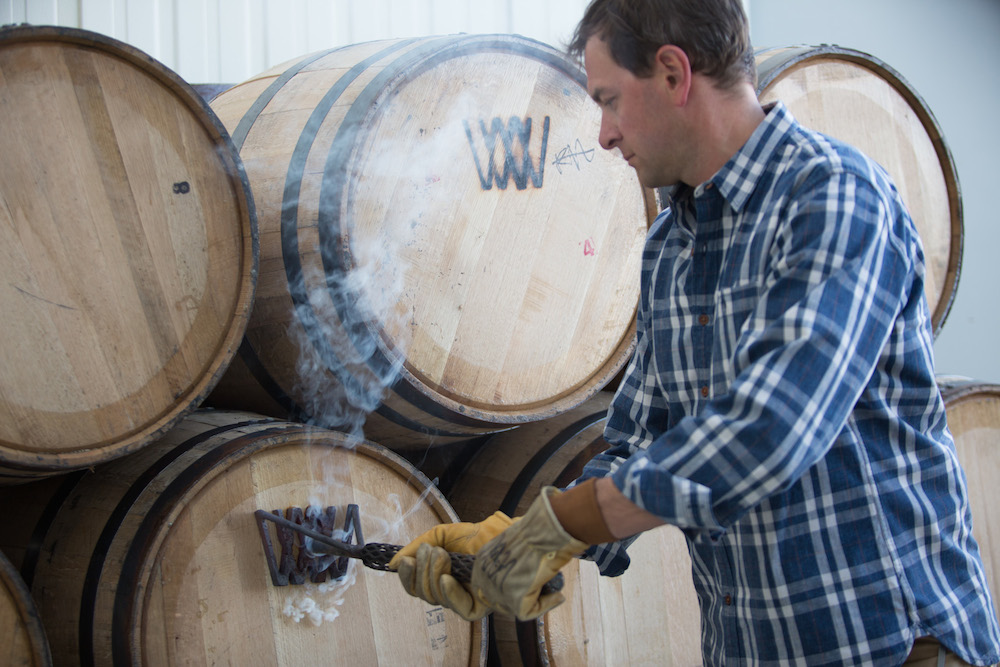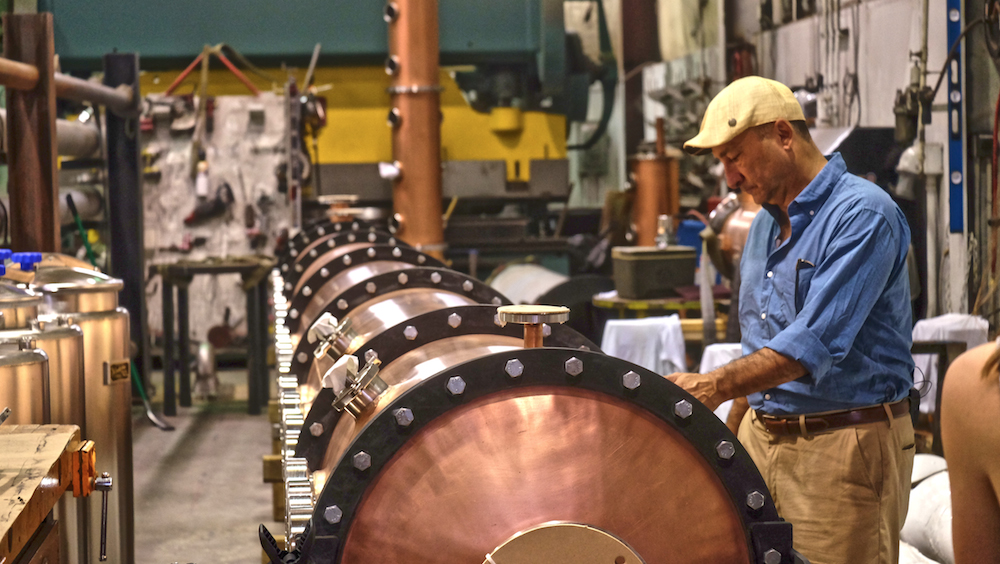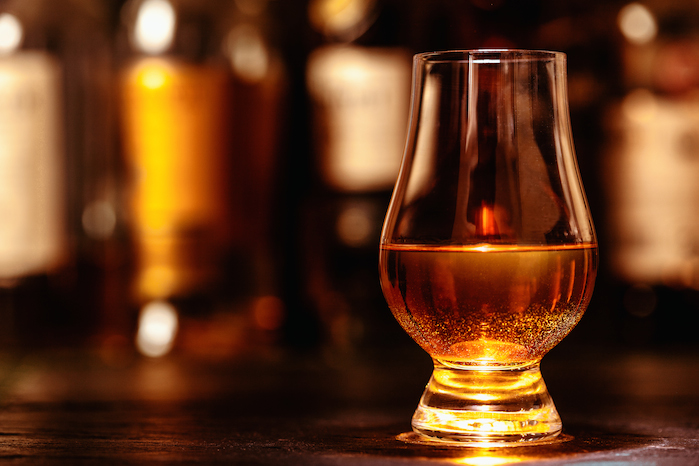Whiskey is amidst a new golden age.
American whiskey grew 6.4% in volume in 2017 to reach 23.2 million 9-liter cases. Bourbon’s volume increased 6.7% last year to 20 million cases. Canadian and Irish remained on fire, as did most imported whiskies (save for Scotch’s relative slowdown).
Expect further growth in 2018 as more consumers discover and drink their way through this broad and red-hot category.
But while the overall outlook for whiskey is fantastic in 2018, there are a few potential issues worth noting.
Immense demand for brown spirits, coupled with the issue of slow cash flow at distilleries, has caused some suppliers to put out questionable product. In particular, there is an influx of young whiskeys bottled before they have time to fully mature. Overall these are unpleasantly tasting products, grainy and sharp, that nevertheless can come with considerable price tags.
This poor price/quality ratio has faint echoes of the craft beer bubble that burst in the ‘90s. The low quality of rushed-out brews helped turned away consumers. While that threat appears far off for whiskey, it’s worth monitoring in 2018, along with these other trends:
1) Barrel/Cask Finishes Remain Hot
U.S. consumers crave variety. The rise of whiskeys finished in used casks —sherry, rum, cognac, wine, other whiskeys, etcetera — has created new flavors for people to purchase and explore. Expect much more of this trend in 2018.
“There’s a lot more finished whiskey out there now. It seems we’re just at the beginning of the cycle of that trend,” says Kaveh Zamanian, owner and whiskey maker at Rabbit Hole Distilling. “It creates a lot more unique product.”
Zamanian wonders whether the finishing trend ties into the natural tastes of the American palate. “There’s a lot of sherry, port, and even rum finishes, which all add sweetness to the finished product,” he says. “And like with wine, American consumers tend to buy sweet.”
From the supplier side, finishing whiskey provides another outlet for creativity. But distillers should remember that there can be drawbacks to innovation.
“It can become challenging for businesses that rely on finishes to attract attention, because then they always have to be coming out with something else that’s new,” says Paul Hletko, CEO and founder of Few Spirits, and former president of the American Craft Spirits Association. “Also, these producers run the risk of taking the wrong course.”
To that end, while experimentation is important, it does also produce duds. At a recent Modern Distillery Age tasting panel we sampled a bourbon finished in ex-brandy casks. The brandy completely overpowered the bourbon. Which is the biggest issue with finishing: natural whiskey flavors can get lost.
“I’m not a big fan of the collapsing difference between bourbon and finished bourbon,” says Zamanian of Rabbit Hole. “Consumers might become confused between the two, which leaves us the potential risk of losing sight of what bourbon genuinely is.”
Overall, though, finishing (when done right) should continue to add new and interesting products to shelves and backbars in 2018.
2) Blends Rise as Age Statements Disappear
Demand for brown spirits is such that many producers cannot keep up. There is not enough old whiskey in barrels. To get more new products onto shelves, distilleries have increasingly ditched age statements in favor of blends.
Do people care? The reaction seems mixed. On one hand, many consumers today (Millennials especially) seem to care more about flavors than numbers on labels. And what exactly are those numbers telling us?

“I’m perfectly fine with the disappearance of age statements,” says Hletko of Few Spirits. “They don’t convey a lot of info to the consumer, just the illusion of valuable info. To me, the quality of a whiskey is not conveyed by the number on the bottle but the brand. The brand is a reflection of quality.”
At the same time, “blended whiskey” is no longer a pejorative. Not when producers like High West and The Macallan are bottling delicious stuff that swaps age statements for time at the blender’s table. Modern consumers do not turn up their noses at blends.
The growing presence of blends is also a product of nimbler distilleries in the craft movement. “With the rise of small independent distilleries creativity is on the rise — what may have had to go through a dozen layers to get approval, now may be decide by one or two people,” says Steve Beam, president and distiller, Limestone Branch Distillery. “I think with the rise of this creativity, and as taboos are broken in the blended category, consumers are encouraged to venture out of their comfort zone.”
But on the other hand, there are traditionalist drinkers who still abide by age statements. These are veteran whiskey enthusiasts. And even some younger consumers might appreciate numbers on bottles, since people “new to the category have an easier time understanding them,” says Mike Raymond, owner of the whiskey bar Reserve 101 in Houston, TX.
Though Raymond does believe that judging a bottle by number alone has become somewhat outdated. “An increasingly educated consumer base will help offset the demand for an age statement,” he says.
Beam agrees: “Just because something is eight, 10, 15 years old does not mean it is great, or even good. I have tasted excellent four- and six-year-old bourbon, and awful 15-year-old. I do think age statements give the consumer one more bit of information to base their decision on. However, it sometimes gives people a false sense of security. When used as an insurance policy, it can sometimes disappoint.”
Age statements have fallen so far out of fashion that some producers see them as a chance to zig where others zags.
“Our sales team has recommended that we include a conspicuous age statement on our label, because our five- and six year-old whiskies are somewhat unique among brands that actually make their own products,” says David DeFazio, co-founder of Wyoming Whiskey. “When it comes to the American craft whiskey category, there is a lot of clutter on the shelf. Age is not the only indicator of a whisky’s quality, but an age statement helps set good whiskey apart from younger, less-mature products.”
Besides, that whiskey shortage holding back age statements may end soon enough. “Distilleries really started pushing production levels up by 2011, so stocks may begin catching up in some of the younger aged-stated products relatively soon,” says Beam.

3) Immature Whiskeys Hit the Market
As previously mentioned, there is a wave of whiskeys that have reached market before full proper maturation. What’s behind this?
Mostly the culprit is newer distilleries. These young businesses wish (understandably) to recoup some of their upfront investment costs through product revenue. Bottling two-year-old bourbon and selling it for $55 generates cash faster than sitting on aging stock for years and years.
But is this practice bad for the overall industry?
“I think lesser-aged, small-barrels, ‘rapid aged’ whiskey can have a negative effect on the market,” says Beam. “It all depends on how they are marketed to the consumer. If the distillery is clear so the consumer knows what they are getting, then I think the damage is minimal. But I would hate to think someone’s first — and possibly last — drink of whiskey is from an inferior young product.”
Immature whiskeys typically taste grainy, like a mouthful of cheerios, with a sharp bite from not spending enough time in barrels to mellow properly.
“Young whiskies rarely leave the consumer wanting more,” says DeFazio. “You only get one chance to make a first impression. And if that first impression is a bad one, it may be a very long time before that consumer takes a second trip down the craft aisle.”
Which is not to say all young whiskeys are terrible. There are some distillers putting out younger products high in quality.
Rabbit Hole recently released a handful of whiskeys after only several years of aging. Zamanian says this was not the original plan. The company had experimented with unusual mash bills, higher proofs upon barrel entry, and differently charred casks. The result was whiskey that attained mature flavor much earlier than anticipated.
“It was a complete surprise to me, as I had said that I would not release anything before four years,”says Zamanian. “But the color and the flavor were there. If the flavor is there, that’s the benchmark. If the product is tasting good, then it makes sense. If not, then it needs to wait.”

Agreeing with him is Tom Lix, CEO of Cleveland Whiskey: “It’s my belief that age is irrelevant,” Lix says. “What matters is the taste. And if that can be delivered in a younger whiskey, then it certainly doesn’t hurt the category.”
The category will also benefit from younger whiskeys that are honest on their labels.
“We do an experimental series that is aged in 15-gallon barrels for between one and two years. We are very clear as to what this is, an example of where we are headed with some of our whiskey,” says Beam of Limestone Branch. “We do not try to market it as a mature whiskey.”
To do otherwise is a hurtful disservice to consumers.
4) Potential Problems for Scotch
While Scotch sales remain solid in America, there are some issues holding it back.
For starters: the price. Younger people may be slow to enter Scotch when basic bottles cost $50 or more. Instead, these consumers may purchase a more-affordable bottle of bourbon, Irish or Canadian.

“If Scotch does not address their image and pricing issues, they will face another major tumble,” says Raymond of Reserve 101. “The category needs to bring 20-somethings — both men and women — to the table. The category needs dynamic single-malt products priced around $25 to help attract a new generation of drinkers.”
Image-wise, Scotch can suffer from seeming old fashioned, and out of touch with modern innovation. Although producers like The Balvenie, The Macallan and Johnnie Walker have long embraced experimentation, other distilleries are slower to switch up their ancient recipes.
“The Scotch whisky industry is going to have to loosen some of their rules to allow more creativity in the category,” says Lix of Cleveland Whiskey. “That’s sacrilege to some, but if the rules only protect the establishment (despite ‘saying’ that it’s for consumer protection), they will have to change.”
In 2018, look for perceptive, forward-thinking Scotch producers to continue experimenting with blends and cask finishes (especially ex-bourbon barrels) to attract U.S. consumers.
Though not everyone is convinced this is the right strategy.
“I have heard there are some Scotch brands are introducing more bourbonesque Scotches,” says Beam of Limestone. “I think this is a huge mistake. Stay authentic. Bourbon tried to chase the clear spirits market making ‘lighter’ bourbons and whiskeys, and in so just about killed the market. It was only when we came back to being unapologetically bourbon that the trend reversed and became a boom.”
“I think that as consumers become more educated and confident they will continue to be willing to try new whiskies,” adds Beam. “Whether they stay depends on the quality that is delivered in the bottle.”
5) Smaller U.S. Styles Shine
Straight bourbon will remain the king of U.S. whiskey in 2018, but other styles will continue gaining in popularity as the boom benefits all brown spirits.
High-rye bourbons have already earned considerable market share with the explosive growth of Bulleit. Drake’s new Virginia Black is another high-rye: a style U.S. consumers already know and love, whether they understand the mash bill or not.

Rye whiskey itself continues to grow. Driven by the mixology movement, the style grew 16.2% in U.S. sales in 2016 to total 900,000 cases. As recently as 2009, rye counted only 100,000 cases in the U.S.
Wheated bourbons are having a moment, helped by the much-publicized cult following of Pappy Van Winkle. The style is also an easy-drinker. “Wheated bourbons offer a softer bourbon that appeals to a wider audience, while maintaining the overall flavor profile that makes bourbon great,” says DeFazio of Wyoming Whiskey. “For this reason, I think wheated bourbons will remain hot.”
American single malt has increased in quality and popularity. The style may not have gotten onto the mainstream radar just yet, but it does not appear far off. Not when producers like Westland, Balcones, and Stranahan’s have already established their single malts as top-shelf products.
“It’s great whiskey that’s different,” says Hletko. His distillery Few Spirits makes an American single malt. “Fundamentally, that’s what distillers want. It does not taste like Scotch, but has the same quality, so it can bring in new drinkers.”
Following their Scottish counterparts, U.S. producers have reflected local terroir in their single malts — like Westland using Washington peat. “I think that this will become a category especially as distilleries discover and remain true to their area,” says Beam. “Elements in and around distilleries and regions will emerge as a factor.”
A newer trend that’s still emerging is whiskeys with unusual mash bills and/or yeast strains. Corsair Distillery is well known for this style. Cooperstown Distillery in New York produces whiskey with oats in the mash bill for added creaminess and complexity.
Rabbit Hole makes a whiskey with 70% corn, 10% malted wheat, 10% malted barley and 10% honey malted barley. “We see this as more of a long-term trend,” explains Zamanian. “We trust that consumers will develop their palates for whiskey the same way they did for coffee and beer. They’ll be able to discern the different mash bills. Though as producers, we need to present that to the public in a way that they can understand the differences.”
“This is where we hope the industry is heading,” he adds. “To stand out you have to be different than bourbon mash bills.”
6) Whisky From Nontraditional Countries
There’s no slowdown in sight for Canadian or Irish whiskeys. (Though Raymond of Reserve 101 worries that the exponentially increasing number of Irish distilleries could set them up for a bubble.) But what about countries that are newer to producing brown spirits?
Japanese whisky is already so trendy that tracking down bottles is difficult. While other nontraditional whisky countries may not match this popularity, they will continue to earn the attention and dollars of U.S. consumers in 2018.
Countries like Taiwan, France, Finland, India and Israel will place more bottles on our shelves. These spirits will attract attention for their exotic flavors. Hletko points to the global success of Taiwan’s Kavalan. “The weather there is so different that they’re making crazy intense whisky,” he says. “[Kavalan Master Blender] Ian Chang is a wizard with blending.”
“With these nontraditional places like Taiwan and Kavalan, you have some something that’s amazing, and you’re the only source for it,” Hletko adds. “That’s a good recipe for success.”
7) Tax Reduction Promotes Growth
American spirits achieved a major victory when the GOP passed their sweeping tax overhaul late last year. The law included the first federal excise tax reduction for U.S. distillers since the Civil War. Beer and wine producers in America had long enjoyed such reductions, which allowed those industries to grow. That meant an unfair playing field for distilleries.
Now that U.S. spirits will receive the same tax break as beer and wine, more dollars are available for distilleries of all sizes. Money that Hletko says will go back into these businesses, including his own mid-sized distillery.
“We’re hiring more people and expanding in equipment. None of that money will end up in my pocket,” he says. “That’s how you’ll see it most commonly used: investment in both human resources and infrastructure.”
“I think this will keep a lot of smaller distilleries afloat. If you were $10,000-$50,000 away from growing profitably, suddenly you have a profitable business,” Hletko adds. “For the bigger guys, this will help them continue to grow.”
All the more reason to expect even brighter things ahead in this new golden age for whiskey.
Kyle Swartz is managing editor of Beverage Dynamics magazine. Reach him at kswartz@epgmediallc.com or on Twitter @kswartzz. Read his recent piece 11 Craft Beer Trends in 2018.





[…] taste of a two year aged whiskey more easily than they can 12 year aged Scotch. A new market of immature whiskey emerged in 2017, and the trend is continuing forward into this […]
[…] brand was founded by Kaveh Zamanian, a former psychologist and psychoanalyst who left his job to pursue his whiskey passion. As part of […]
[…] – I had a certain taste profile in mind and I sought those barrels that matched it,” says Steve Beam, head distiller at Limestone Branch Distillery. “The barrels I chose were in different parts of […]